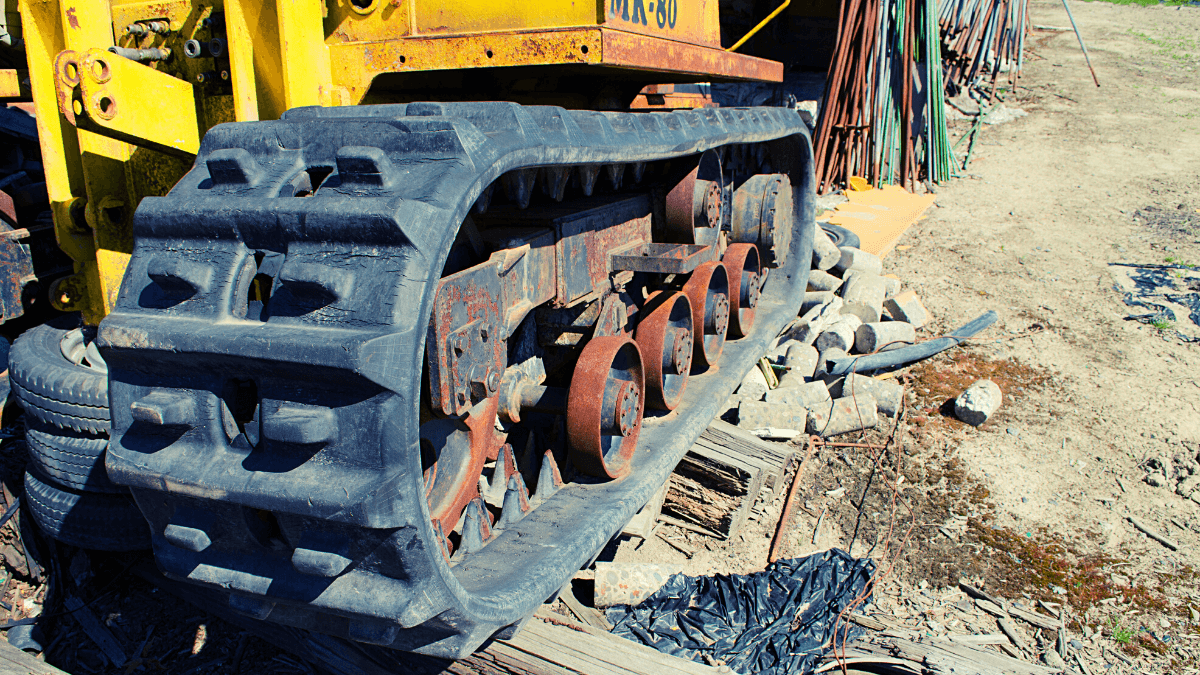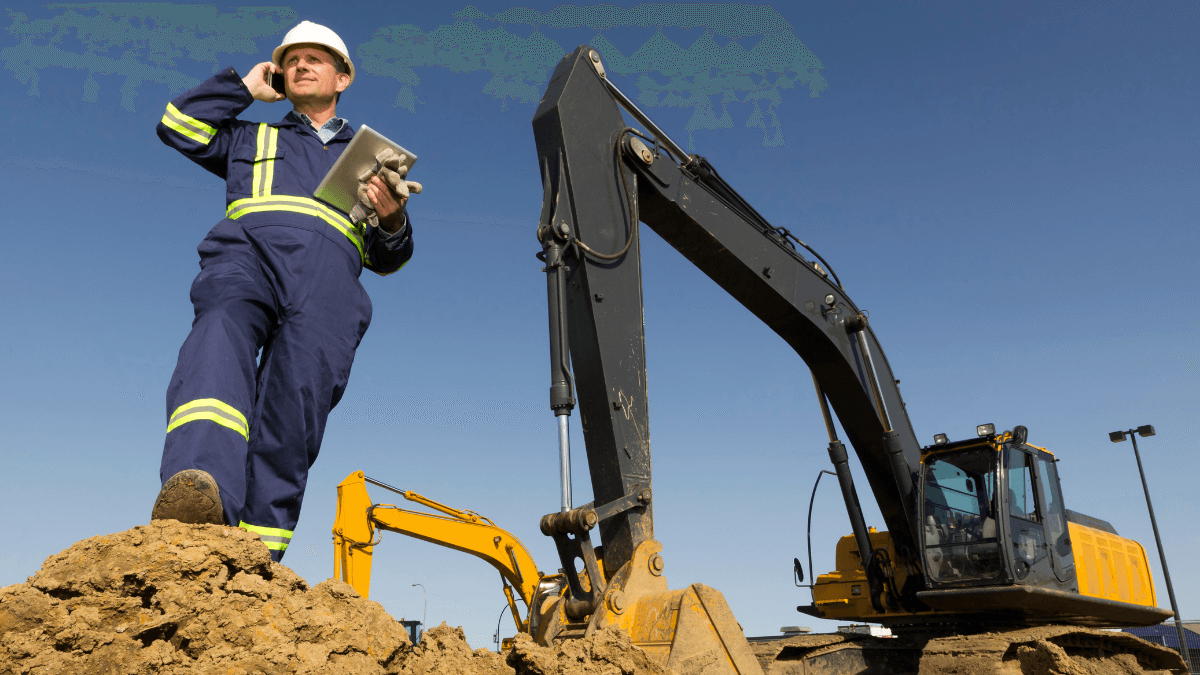Key Takeaways:
- Effective budgeting always requires timely planning, consistency, and access to fresh data.
- Following just a few specific practices creates a major cost-saving effect, but construction businesses need to have a proactive approach to risk management.
- Software solutions can help you automate and enhance different processes, from asset tracking to managing change orders.
Construction projects are rarely completed without significant time or cost-related challenges.
Budget overruns can be especially troublesome because they impact not only projects themselves, but also your company’s long-term financial health.
Staying on budget isn’t easy, but given the right approach, it’s well within your reach!
In this article, we’ll be sharing 7 practical tips to help you do just that.
Ready to make a positive change in your company? Here’s everything you need to know!
In this article...
Clearly Define the Project Scope
Defining the project’s scope from the get-go is essential for keeping your budget in check, and the entire project on track.
Having a clear list of each party’s obligations, milestones, and key technical details is essential for preventing miscommunications and costly mistakes.
On the other hand, a lack of clarity typically results in scope creep.
Scope creep refers to all the additional project requirements that start popping up once construction is already underway.
And, according to the 2018 PMI research, it’s more common than you probably think: over half of all construction projects experience scope creep.
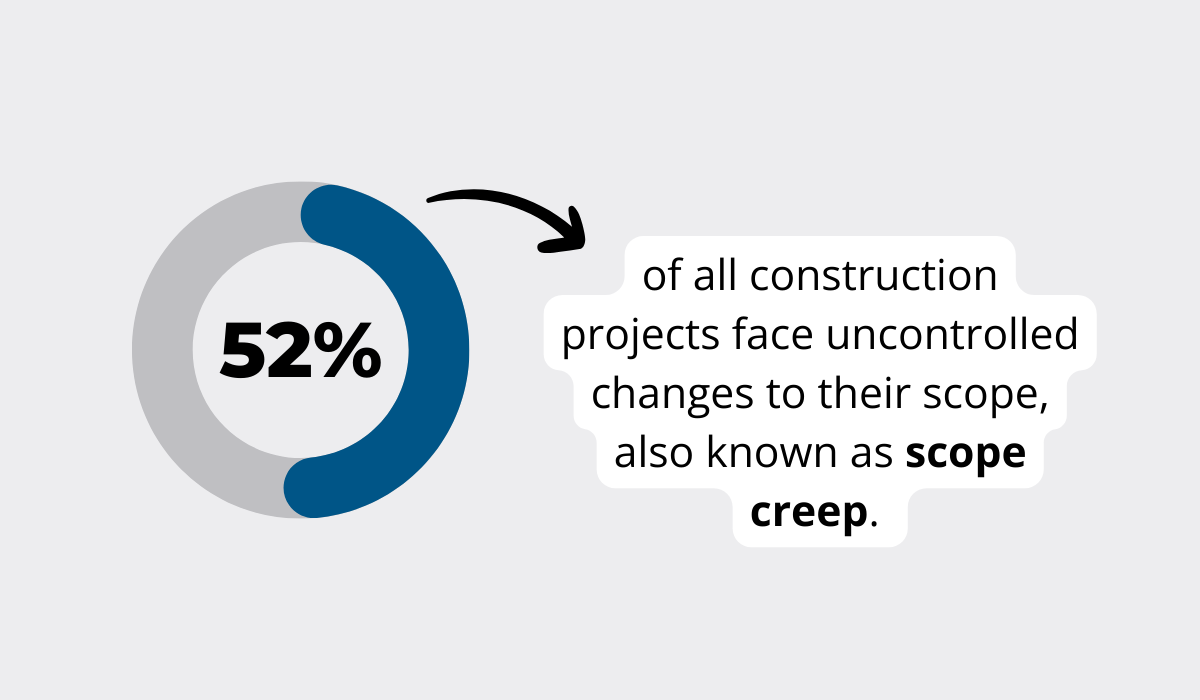
While the underlying causes behind it vary, there is one surefire way of avoiding this scenario, and that’s having a well-written scope of work (SoW).
So, what should an SoW include?
Since you’re defining all the work to be performed on a specific project, you need to include basic project information and critical objectives, but also contract terms and payment schedules.
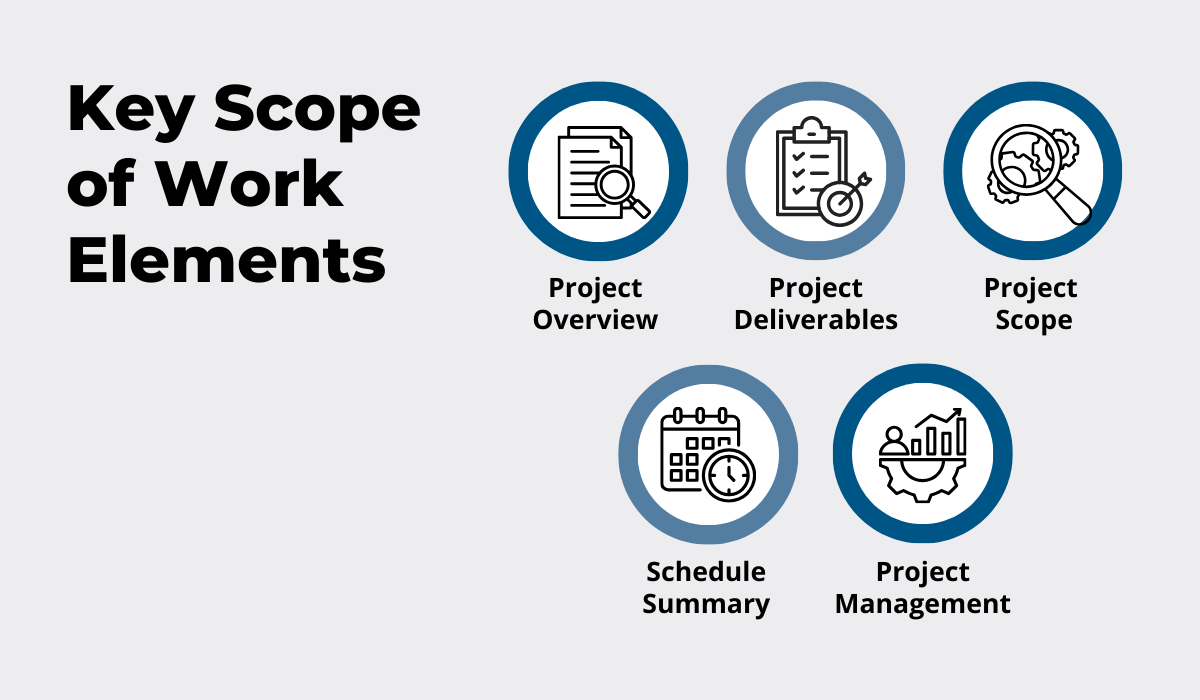
Each element adds a little more detail until you’ve filled in your sketch and left no ambiguities.
You can also use different templates to organize key information quickly, from a more comprehensive Smartsheet template to a concise Workyard version shown below.
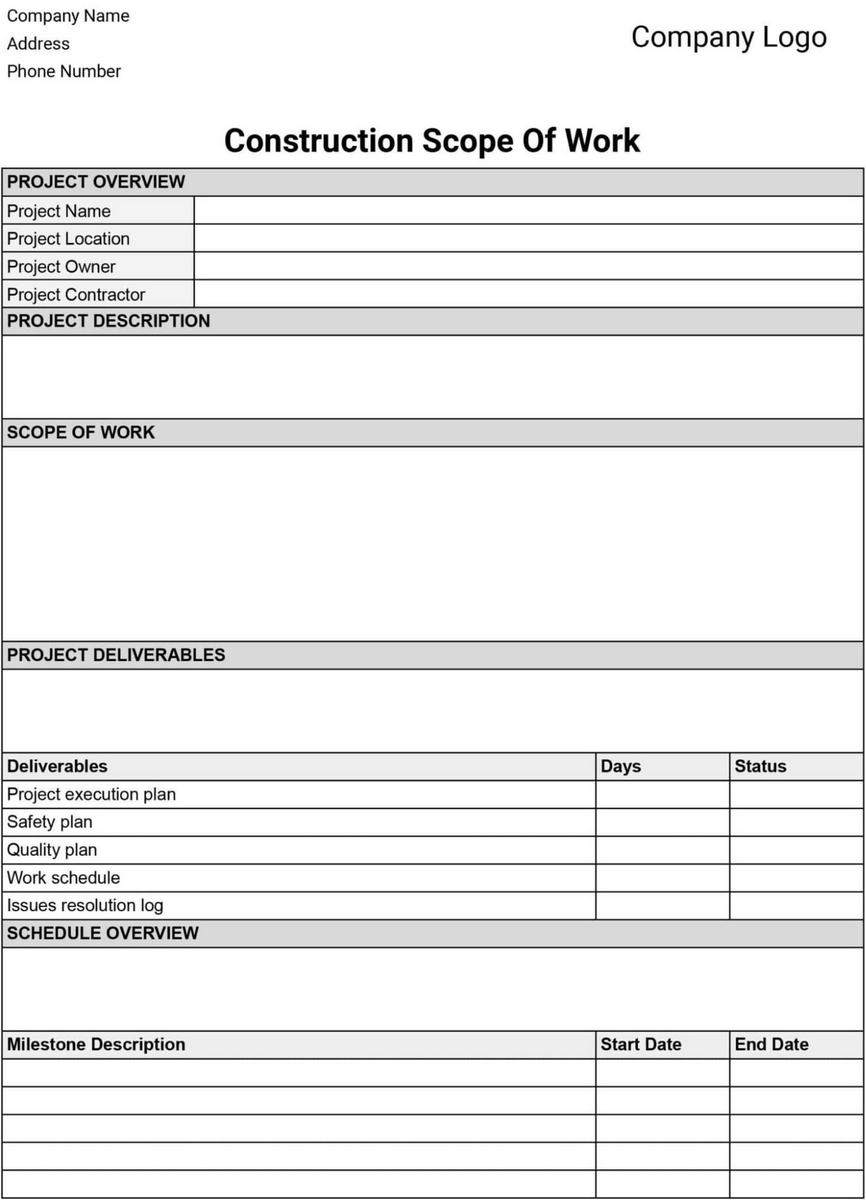
However, no scope of work is etched in stone.
Construction is a volatile industry, and project conditions can change dramatically.
As such, your scope must allow a degree of flexibility while laying down specific procedures.
Find the right balance, and the chances of you facing scope creep will be slim to none!
Create a List of Required Resources
Once you have a well-defined scope, it’s time to make a list of all the resources needed to bring the project to completion.
Developing a comprehensive list of materials, equipment, and labor is essential for successful construction budgeting.
This and other construction resource management practices make it easier to estimate expenses and avoid additional costs.
However, external factors like labor shortages can complicate this process.
According to the AGC’s 2024 workforce survey, 94% of construction companies report having open positions for craft workers.
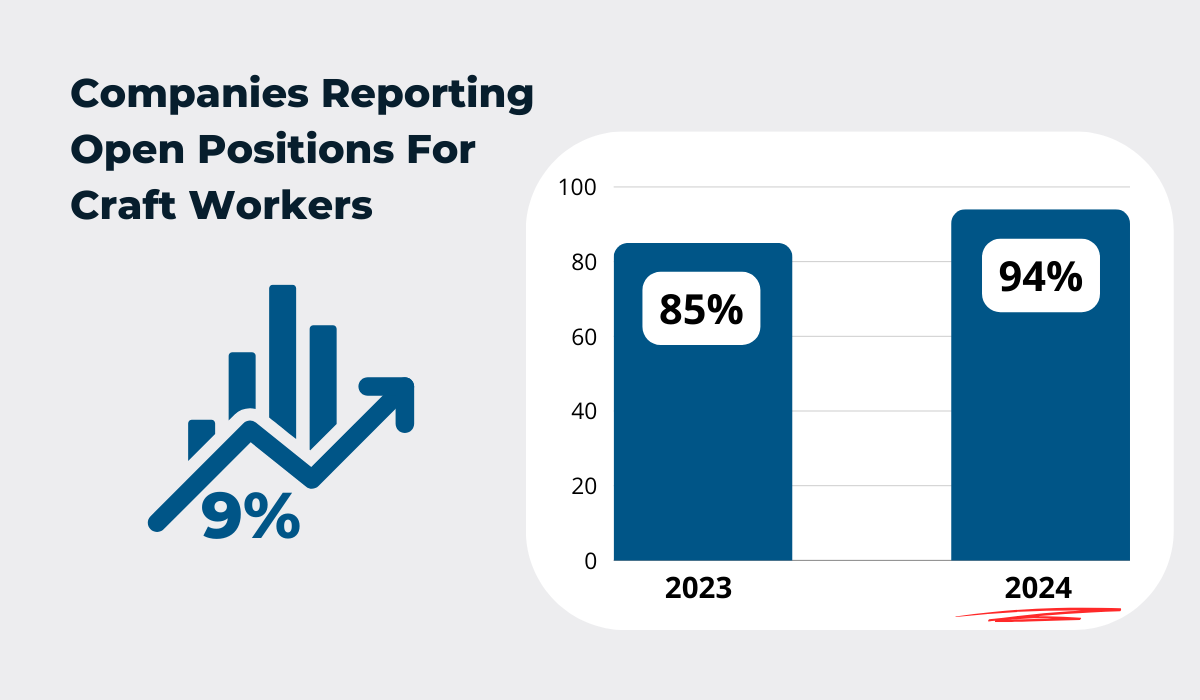
This is a considerable increase compared to 2023, which highlights that labor shortages are still a major challenge for the construction industry.
If the availability of craft workers or any key resource is questionable, you’re likely to face unexpected costs down the line.
However, creating a detailed list of resources and setting a realistic budget is easier if you’re working with an estimator.
Estimation consultants are experts in their field, offering a variety of services, including:
- Material takeoffs
- Feasibility assessments
- Full estimates
- Cost analysis
- Drafting
An estimator will factor in common risks, such as general labor availability or fluctuating material costs, often suggesting contingency budgets.
To get the most out of such collaboration, be sure to check out different work models and choose the one that works best for you.
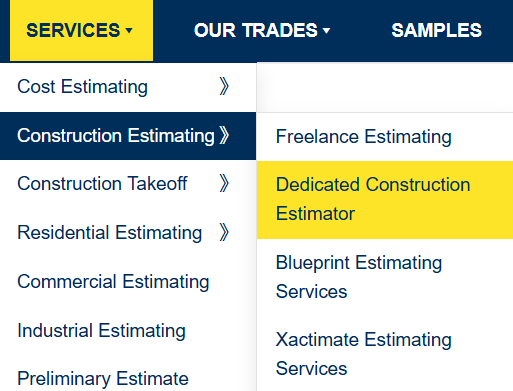
Spending enough time on this step, as well as enlisting the services of experts, guarantees you won’t be overlooking any angles and suffering extra costs later on.
Plan for Potential Risks
Identifying and planning for potential risks is another effective way to stay on budget.
When you take a look at some of the key statistics on construction risks, it becomes clear that mitigating the common ones shouldn’t stop at cost estimation.
Why?
Because different construction risks can easily create disruptions and lead to cost overruns.
However, conducting thorough risk assessments and developing a comprehensive risk management plan can help you navigate even the roughest waters.
With so many different emerging risks, you may feel pressured to devise an elaborate risk management framework, but that’s not your priority here.
Bahare Heywood, an experienced Chief Risk & Compliance Officer at an international law firm, reminds businesses from all industries to simply focus on creating an action plan.

Doesn’t that sound more manageable already?
Creating an action plan begins by mapping all potential risks, and then prioritizing them based on how likely they are to happen, as well as the potential consequences they carry.
A simple risk assessment matrix, in either a 3×3 or a 5×5 grid, can quickly provide a lot of clarity.
Take a look at the example of such a matrix below.
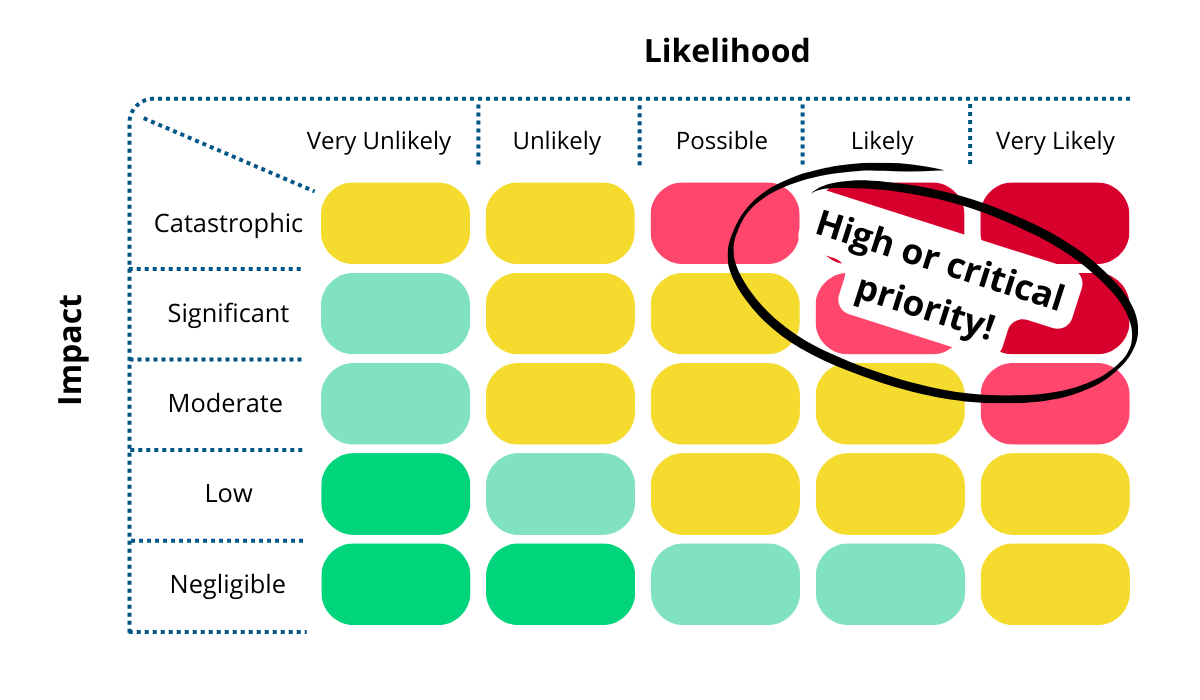
Your key priorities will inevitably emerge in the upper right-hand corner.
Now, each of these top risks will require strategies and backup plans, as well as some extra money.
With these budget contingencies, you won’t find yourself crippled by any unexpected scenarios.
In fact, you’ll have a pre-defined amount of money that you can tap into if there’s a need.
In other words, planning for key risks from the very beginning means you’ll be prepared to handle anything that comes your way and do so at a reasonable cost.
Continuously Track Your Costs
Another good way to make sure your construction project stays on the budget is to keep monitoring all your project expenses in real time.
By tracking construction costs, you’ll be able to spot any cost overruns early on and make the necessary adjustments on time.
Prompt action will help you avoid major financial issues down the line and dramatic cost escalations, like the ones that marked the construction of NYC’s MTA East Side Access.
The planned cost for this project was estimated at $3.5 billion dollars, but it ended up costing three times the estimate.
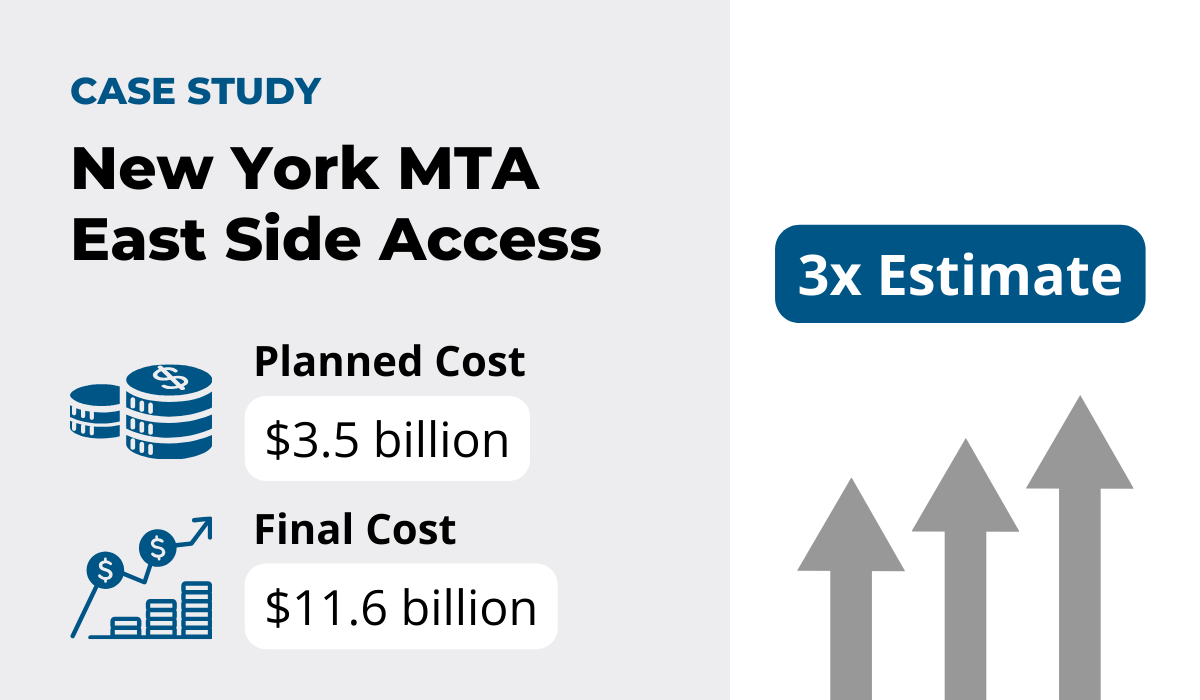
So, what contributed to this astronomical budget overrun?
Many factors: from the complexities of tunneling in a dense urban environment to poor project coordination and decision-making.
And while political corruption did play a role, it was poor cost tracking that ultimately enabled the hiring of 900 workers instead of the necessary 700.
So what can you do to make sure you don’t experience something similar?
The most dependable solution is to introduce a reliable construction project management platform.
Construction project management software comes in many forms, but the key thing to look for is the ability to maintain control over nearly all aspects of a project.
Take Procore’s powerful suite, for instance.
One of its functionalities enables the users to cross-reference budgeting data with field productivity for a more efficient daily or weekly review of costs.
That way, project managers can draw precious insights, pinpointing whether higher labor costs come from poor workflows, resource shortages, or delays.
Depending on the root cause of cost inefficiencies, they can immediately reallocate resources, schedule overtime, or introduce some other appropriate measure.
The point is that consistent cost tracking enables data-driven decision-making that paves the way to cost savings and smooth project completion.
Keep Change Orders Under Control
As mentioned previously, the project scope is often subject to change—the goal is to keep these changes under control.
Making adjustments tends to drive up costs and disrupt the project timeline, which can land a significant blow to your budget.
That’s why it’s important to keep track of and review any changes before committing to them.
Yet, only 64% of construction companies document change orders, and not on all projects, research shows.
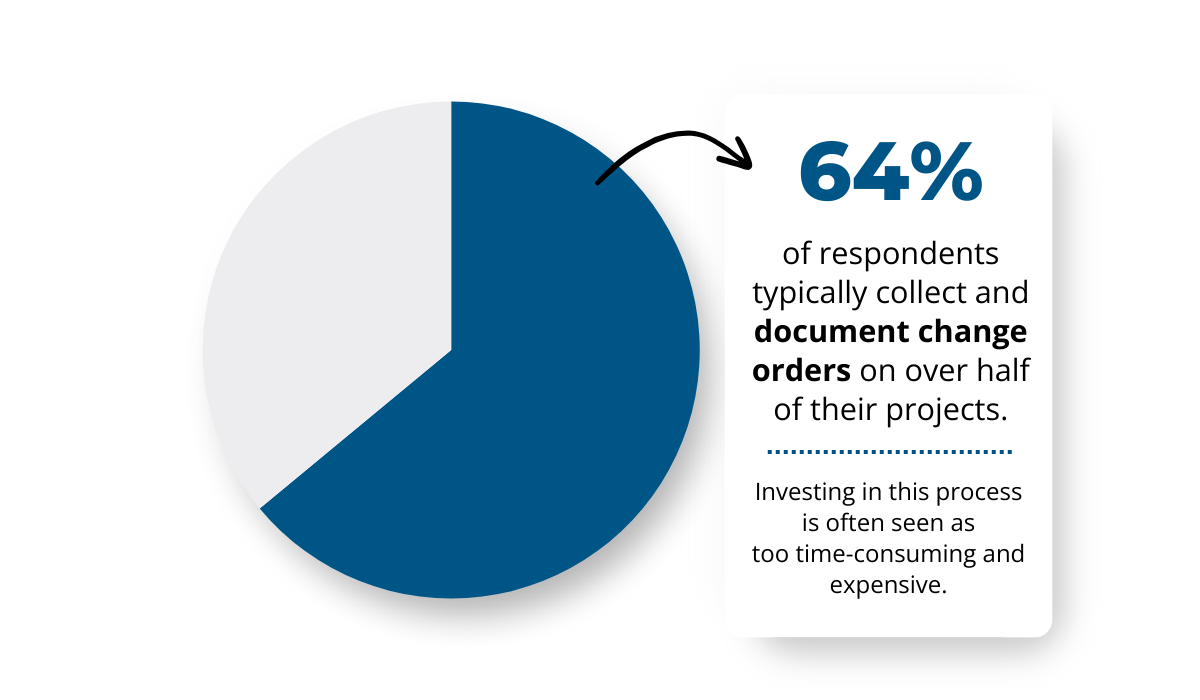
Documenting construction change orders makes it easier to identify problematic patterns, and keeping them under control begins with a formal change order process.
Having this process in place guarantees that each change is carefully reviewed and approved by authorized personnel once these questions are answered:
- (Why) is it necessary?
- What’s the new price tag?
- How will it impact the project milestones?
Doing so can prove to be crucial in cases of future disputes, so it’s well worth the effort.
And if you’re worried about how time-consuming it would be, you can always rely on different tools that speed up the process.
For instance, software solutions like Fieldwire make it easy to keep track of all change orders.
And remember: establishing any new process takes time, but the reduced risk and overall impact are worth the investment.
Lock In Material Prices with Suppliers Early
Securing key materials early on and at a fixed price can protect your construction company from costly market fluctuations.
Prices of construction materials are influenced by many factors, which is why a specific material can be affordable one moment and then reach a record high the next.
That’s exactly what happened in May 2024, when the copper prices spiked to $4.76.
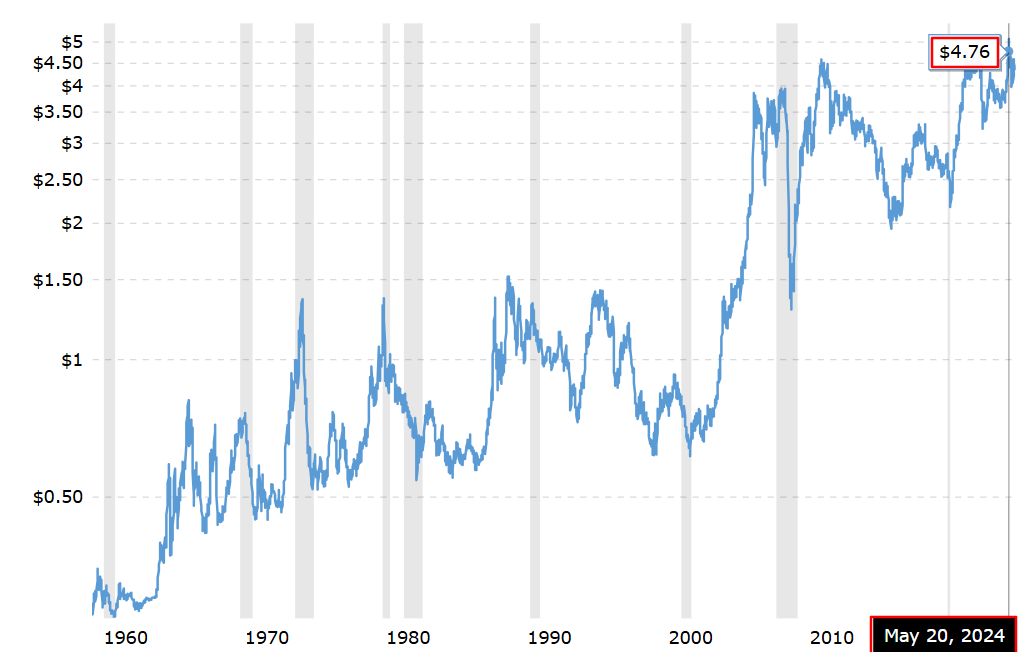
The sudden jump created huge issues in several sectors, including construction, but bracing for the impact was easier for those businesses that managed to lock in prices early on.
So, how can you do the same?
Ordering in bulk and negotiating fixed-price agreements whenever possible will help you counter supply shortages or inflation, as well as ensure you stay within your projected budget.
Of course, this is much easier if you make it a habit of building strong supplier relationships.
Suppliers value long-term, collaborative approaches, as well as openness to communication.
Saber Salem, a Project Engineer at Poulina Group Holding, adds that staying aware of market trends and anticipating changes is a big part of these efforts.
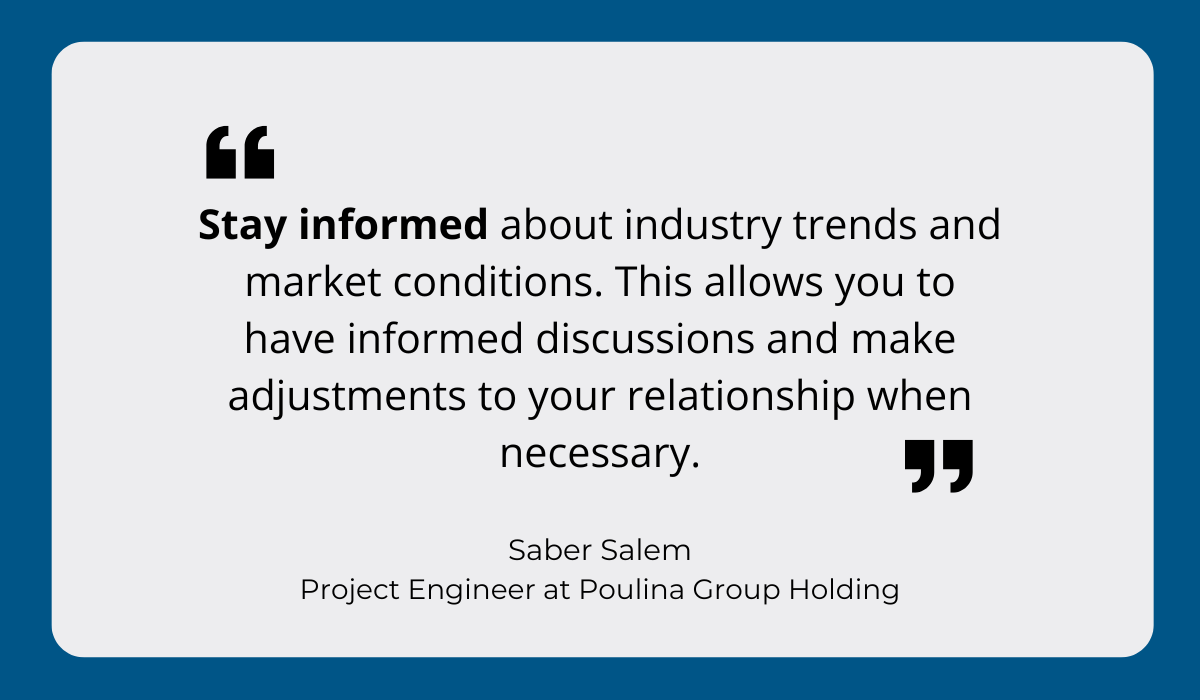
Prior research will help you approach negotiations from a stronger position, and you won’t risk damaging the supplier relationship over prices that are beyond their control.
In the end, the cost of construction materials is bound to stabilize eventually, but the lack of planning and negotiating prowess can damage your budget beyond repair.
Keep Equipment Costs In Check with Asset Tracking Software
Construction equipment costs vary based on numerous factors, but you can easily rack up additional ones if you’re still not relying on an asset tracking solution.
While many companies still put off investing in asset tracking due to the upfront cost, more and more are actually adopting these systems.
This is reflected in the projected market growth of USD 59.64 billion by 2032.
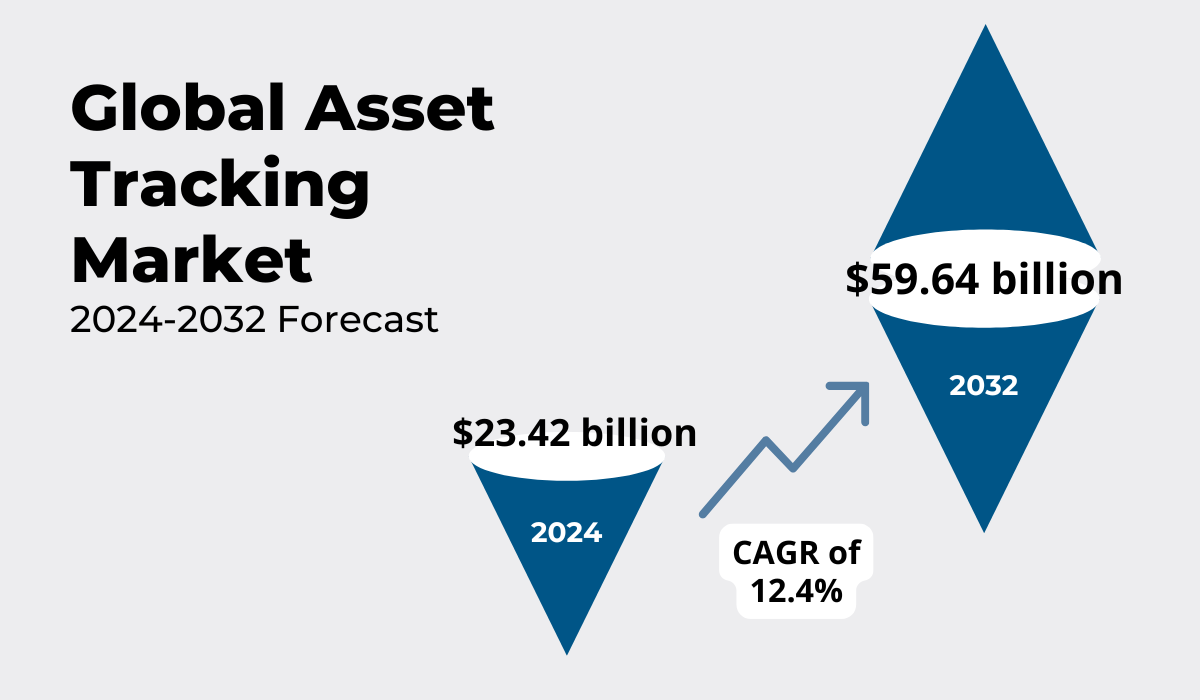
While the dangers of manual asset tracking are part of the motivation, it’s clear that the benefits of collecting asset data are even bigger drivers.
CEO of Hilti North America, Michael McGowan, breaks down the advantages:
“[…] then your offices would know how many assets you have, how many assets are being used, how many are sitting idle, who might be hoarding tools on a jobsite that don’t need them any longer—that would allow you to reposition them onto a project where they can actually make you money.”
Simply put, asset monitoring solutions drive efficiency while taking care of major sources of unexpected equipment-related costs.
Our GoCodes Asset Tracking is one such solution.
GoCodes Asset Tracking boasts an intuitive cloud-based system that provides total visibility through several tagging options, from customizable QR code labels to real-time GPS trackers.
All the data you collect is organized in one centralized asset database which is updated in real-time.

You can easily find relevant asset information, check out the equipment you need, or schedule service tasks, thereby helping you avoid excessive maintenance costs and unplanned downtime.
The software also excels at preventing asset loss or theft, which can incur additional unwanted costs, too.
For example, real-time GPS trackers can be applied to your most valuable assets, enabling minute-by-minute location updates.
The system’s geofencing features deliver an additional layer of security, allowing you to set up virtual boundaries, and be notified of any suspicious activity through instant loss alerts.
Plus, since the geofencing feature also picks up telematics data—from engine performance and usage hours to speeding—it’s perfect for keeping a close eye on specific assets.

With an asset tracking system by your side, you’ll protect your budget by cutting down on all avoidable costs while enjoying a sweet efficiency boost!
Conclusion
And there you have it!
Each of these practices provides a roadmap to overcoming common budgeting challenges.
Yet, they all share common ground: effective budgeting relies on thoughtful processes, consistency, and access to real-time data.
While software solutions and industry experts can speed up the journey, the most important step you can take is to adopt a proactive, meticulous mindset.
Embrace these strategies, and you’ll soon see more financially successful projects and stronger margins, and gain knowledge and confidence to take your business to new heights!






